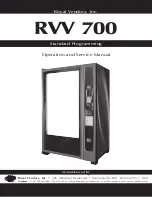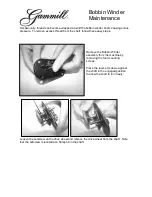
20
KNIT BLINDHEMMING
The zigzag in this blindhem stitch adds stretch, making it
the perfect choice for hemming knits. Use a thread color
that matches the fabric color for the best results.
Turn up the finished edge of the fabric to the desired hem
depth [Fig. 1]. Fold back, leaving a 1/4” edge [Fig. 2].
Place garment under the foot with the folded edge along
the hem guide [Fig. 3]. Adjust the guide by turning the
screw so that the fabric fold is against the guide and the
needle just barely catches the fold as you sew. You may
need to sew a few test samples on scrap fabric to make
the correct guide adjustment on the presser foot.
Stitch slowly.
OVERCASTING
The three-step zigzag is a strong stitch. It takes three
small stitches to the right and three small stitches to the
left. Use the three-step zigzag stitch to overcast or clean
finish seam allowances. It is easier to overcast the raw
edges first before seaming.
Position and guide the fabric under the presser foot so
the right swing of the stitch forms just inside the edge of
the fabric [Fig. 4].
MENDING
Use the three-step zigzag to repair small rips and tears.
Place a stabilizer under the tear in the fabric. Sew
along the line of the tear [Fig. 5]. The stitch joins both
sides of the tear.
BUILT-IN STITCHES – “N” NORMAL RANGE
STITCH “B” - KNIT BLINDHEM
STITCH “C” - THREE-STEP ZIGZAG
Fig. 1
Fig. 3
Blindhem
Fig. 4
Fig. 2
Overcasting
Fig. 5
Mending
RANGE
STITCH
WIDTH
LENGTH
FOOT
N
B
3-5
4
Blindhem
RANGE
STITCH
WIDTH
LENGTH
FOOT
N
C
3-5
1.5-2
All-purpose
RANGE
STITCH
WIDTH
LENGTH
FOOT
N
C
3-5
0.5-1.5
All-purpose















































